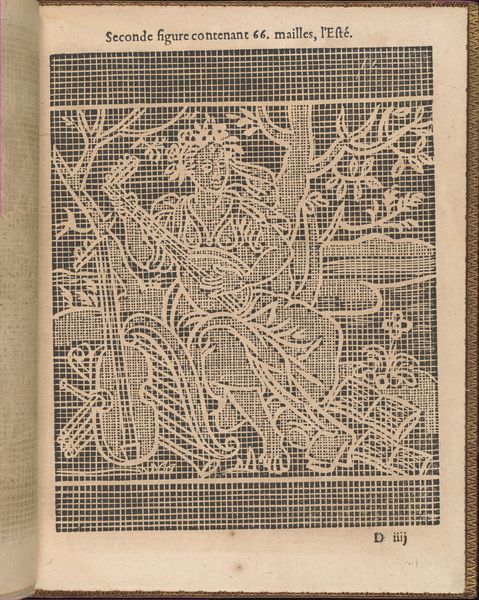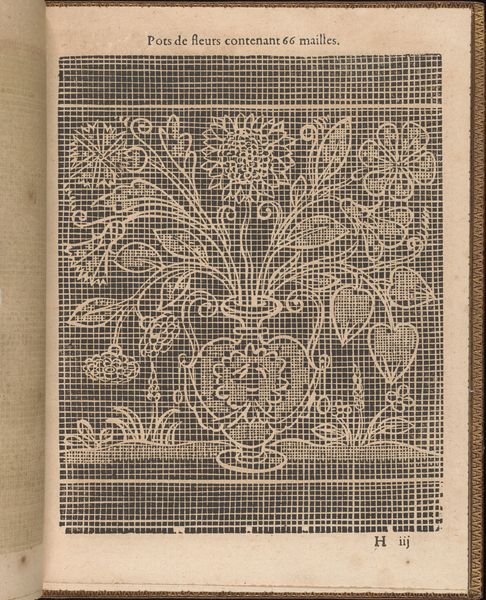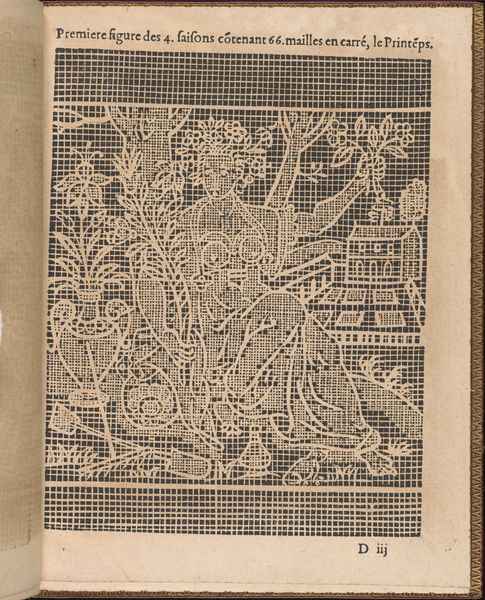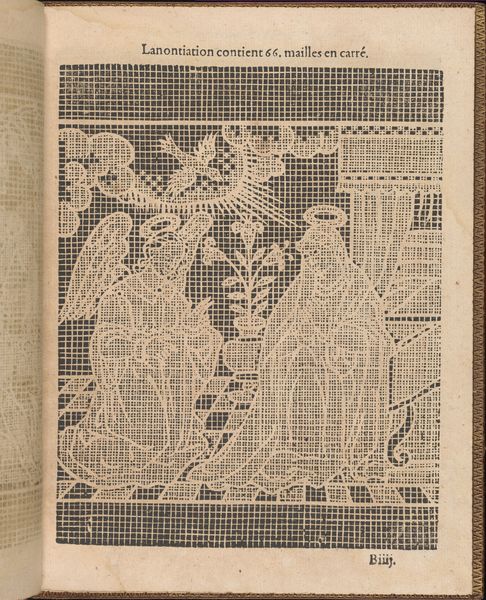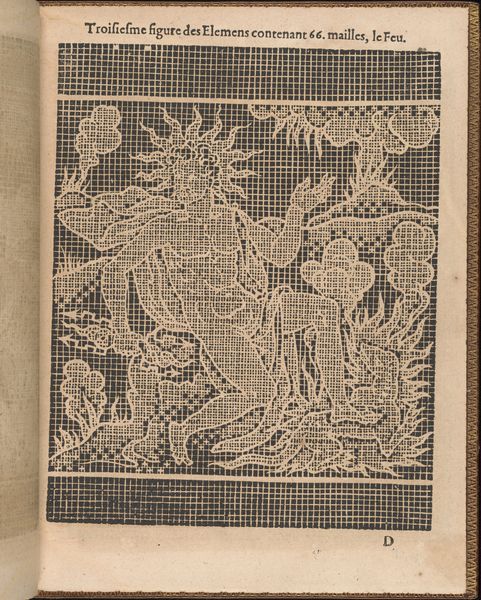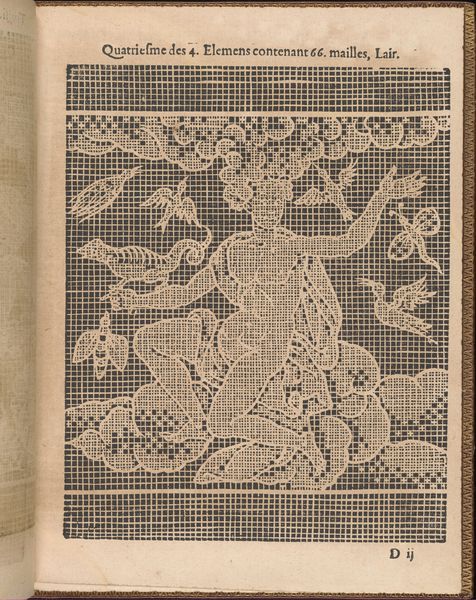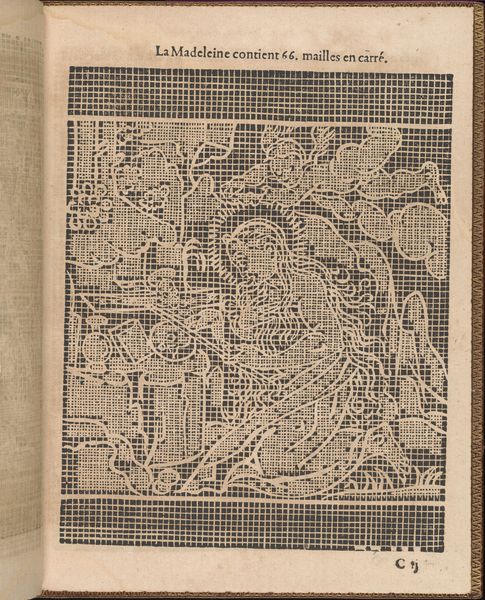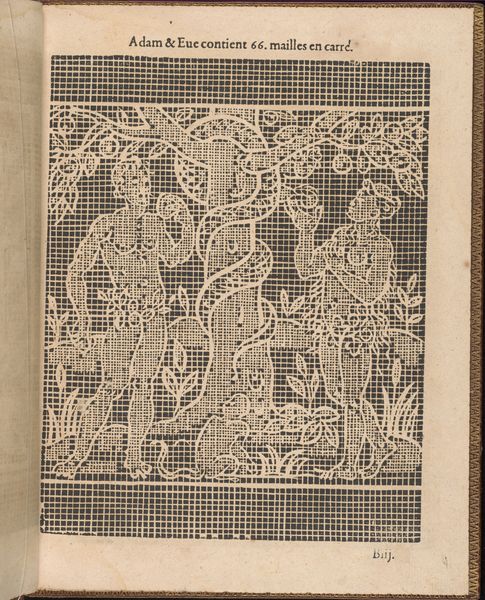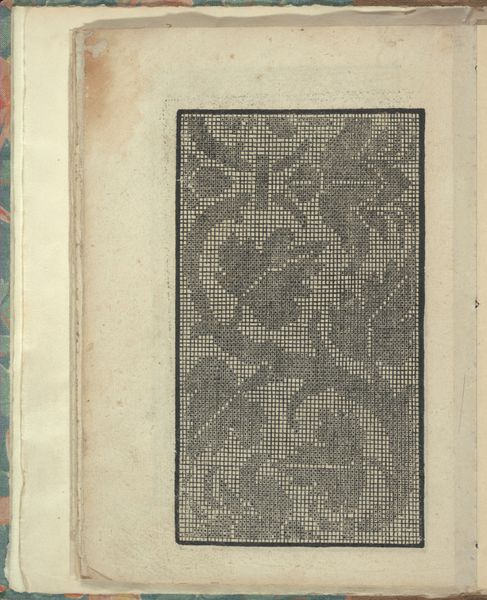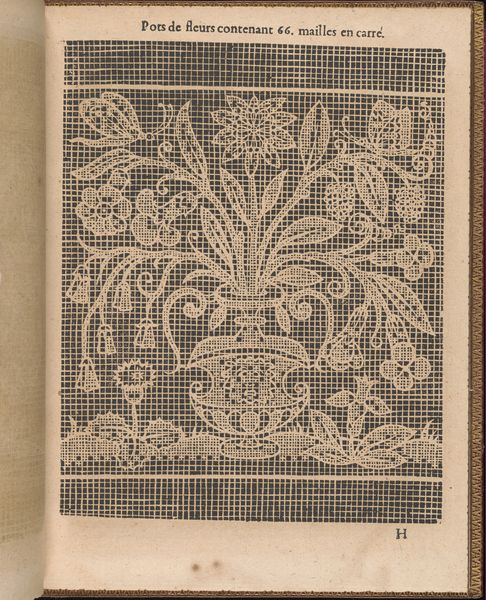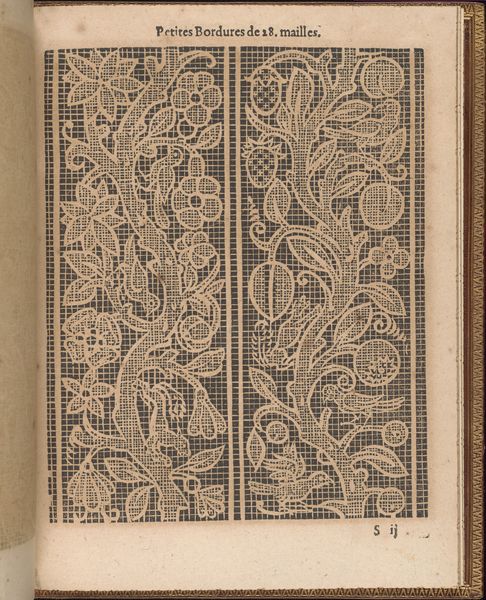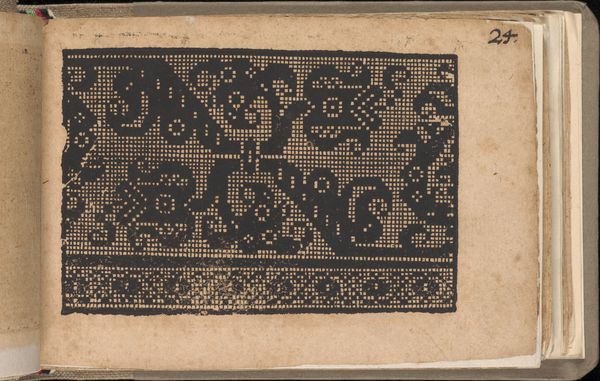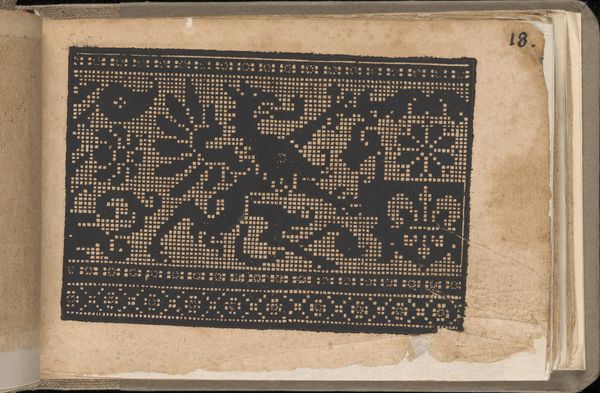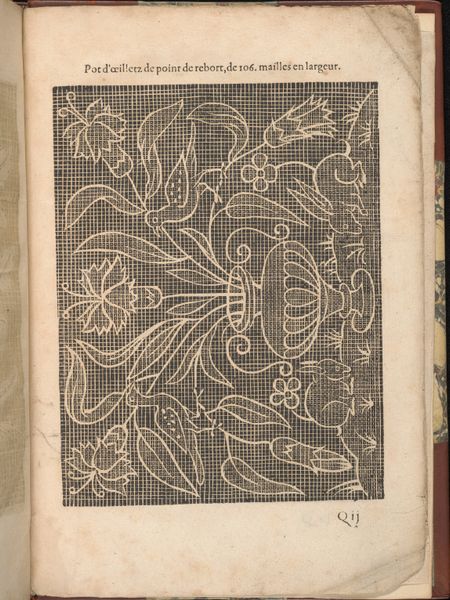
drawing, print, etching, engraving
#
drawing
#
medieval
# print
#
etching
#
figuration
#
line
#
decorative-art
#
engraving
Dimensions: Overall: 9 1/4 x 7 1/16 in. (23.5 x 18 cm)
Copyright: Public Domain
Curator: Here we have "La Pratique de l'Aiguille, page 16 (recto)" by Matthias Mignerak, created in 1605. It's an etching and engraving, essentially a print from a book, held at the Metropolitan Museum of Art. Editor: Immediately striking is the dense, almost overwhelming detail. It looks like an elaborate, intricate pattern. Is that a grid behind it all? Curator: Yes, it’s quite interesting. These were pattern books demonstrating the lace maker’s art—essential to expanding design vocabulary across Europe, and, crucially, elevating needlework from a domestic task to a professional art form. The grid provided the pattern, demonstrating exactly how to build up the image with stitches. Editor: It does remind me of a sampler. Beyond the practical application, I see an underlying tension between the geometric rigidity of the grid and the free-flowing, organic motifs layered on top. The lines vibrate! Curator: Indeed. Remember that elaborate lace signified luxury and status. Sumptuary laws controlled who could wear what. The print served as both instruction and, to some extent, aspiration. Editor: And aspiration materialized via careful study of linear progression, tone, and form in needlework. There's an artistry at play that goes beyond mere technique. The way the floral elements interact with the human figures, for example. Do we know what they represent? Curator: Unfortunately, not definitively. It's safe to say Mignerak sought to ennoble the practice. Books like these helped propel needlework out of purely functional bounds, shaping identities, class display, and even courtly fashions of the time. Editor: So we see not just the product, but also an entry into a wider world of trade, labor, and even the politics of clothing. It’s interesting how a simple instructional guide becomes loaded with all this socio-historical information! Curator: Precisely. Viewing art always extends past the aesthetic properties, right to the roots of its creation and dissemination, reminding us of our history. Editor: Yes, you are right, and as an art object itself this engraving offers a view into how one medium influences another and the cultural weight we assigned to its aesthetic and social value, in any event an invitation to look closely.
Comments
No comments
Be the first to comment and join the conversation on the ultimate creative platform.
